Storytime with KBC: The Patagonian Giants
Happy New Y—whoa! Your old pal Kentucky Blue Clay seems to have overshot the mark a little bit here. Oops! Sorry about that, folks. Hey, don’t think of it as an “unexplained absence”. Let’s call it a “sabbatical”. I’m a professor; we get those, right? In any case, hope you all got everything you wanted for Christmas. And Valentine’s Day. And National Proofreading Day. Okay, I’m changing the subject…
Ferdinand Magellan: Portuguese explorer; namesake of straits, craters, and adorable little penguins; and almost-but-not-quite circumnavigator of the globe. As much as I’d like to talk about the penguins, let’s redirect our focus to that last thing. In 1519, Magellan sets sail from Seville with five ships on a journey to discover a westward route to the Orient. And damned if the guy doesn’t find it! After sailing across the Atlantic and crossing into the Pacific through what the narcissistic jerk calls the Strait of Magellan, Ferdie’s fleet eventually makes its way to the Philippines. The intrepid explorer learned a lot on this voyage. For instance, he learned that being a total dick in the Philippines is a super bad idea! Only 18 of the original 237 men made it back to Spain, and Magellan wasn’t one of them, having picked a fight with natives who were not to be &@%#ed with.
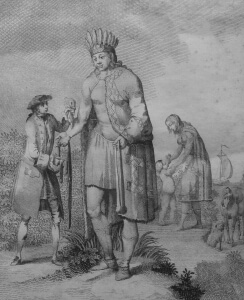 We know all of this thanks to the work of two men: sixteenth century author and poorly disguised vampire Maximilanus Transylvanus, who interviewed the surviving members of Magellan’s crew; and Antonio Pigafetta, Magellan’s assistant, who kept an extensive journal throughout the voyage. Maxie Tran’s book’s a decent read, but it skips over something pretty damn important.
We know all of this thanks to the work of two men: sixteenth century author and poorly disguised vampire Maximilanus Transylvanus, who interviewed the surviving members of Magellan’s crew; and Antonio Pigafetta, Magellan’s assistant, who kept an extensive journal throughout the voyage. Maxie Tran’s book’s a decent read, but it skips over something pretty damn important.
The Strait of Magellan passes between Tierra del Fuego to the south, and an area called Patagonia to the north, made of the southern tips of Chile and Argentina. But why “Patagonia”? Where the hell did that name come from? According to Pigafetta’s journals, Magellan named the land after the people who lived there. The Patagones. A race of giants!
Hey, don’t take my word for it! Let’s let Pigafetta tell the tale:
“One day we suddenly saw a naked man of giant stature on the shore of the port, dancing, singing, and throwing dust on his head. The captain-general sent one of our men to the giant so that he might perform the same actions as a sign of peace. Having done that, the man led the giant to an islet where the captain-general was waiting. When the giant was in the captain-general’s and our presence he marveled greatly, and made signs with one finger raised upward, believing that we had come from the sky. His bulk and stature were such, as would easily allow him the character of a giant: the head of one of our middle-sized men reached but to his waist, and he was proportionably big.”
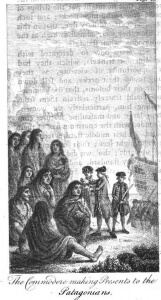 The giant led Magellan and his crew to his village, where they found more of these enormous people. They seemed to be a friendly people, so Magellan, being a man of his time, was all like “Hey! Let’s make ‘em slaves!”
The giant led Magellan and his crew to his village, where they found more of these enormous people. They seemed to be a friendly people, so Magellan, being a man of his time, was all like “Hey! Let’s make ‘em slaves!”
*sigh* Way to be a complete bastard, History!
The giants were happy enough to let the Spaniards chain them up, amused as they were by the jingling metal. But it turns out that getting a giant to do what you want is a lot harder than it sounds. Tell us about it Antonio:
“One alone tried the utmost force of nine men that were employed to master him, and though they had him down, and bound his hands tightly, yet he freed himself from his bonds and got loose, in spite of all their endeavours to hold him.”
In the end, Magellan had to leave without his human-trafficky prize. Sure, he was disappointed, but then he went to the Philippines and died real bloody, so it all turned out okay.
It would be easy enough to discount this as the ravings of a single lunatic, but it turns out Magellan’s crew weren’t the only ones to meet the Patagones. Sixty years later, Francis Fletcher, ship chaplain for Sir Francis Drake, describes coming in contact with the tribe of giants too. And in 1766, John Byron and the crew of the HMS Dolphin landed in the area and spent some time chilling on the beach and sharing their tobacco with the Patagones. Preach it, Byron:
“Mr Cumming came up with some tobacco, and I could not but smile at the astonishment which I saw expressed in his countenance, upon perceiving himself, though six feet two inches high, become at once a pigmy among giants…”
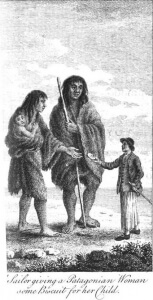 Now, this sort of thing is not without precedence. Giants exist in folklore from all over the world, from the Jotun of Norse mythology, to the Greek Titans, to good ol’ Goliath in the Bibley times. Giant sightings died off pretty far back in history over in Europe, but they stuck around a lot longer in the Americas. The Paiute people of Nevada share stories of the Si-Te-Cah, a race of redheaded, cannibalistic giants who once shared the land with them. And down in Peru, the Inca once told tales of a group of giants, three times the size of normal men, who came from across the sea, and terrorized their cities. There were giants in the earth in those days, and it turns out that “those days” were a lot more recent than you might think.
Now, this sort of thing is not without precedence. Giants exist in folklore from all over the world, from the Jotun of Norse mythology, to the Greek Titans, to good ol’ Goliath in the Bibley times. Giant sightings died off pretty far back in history over in Europe, but they stuck around a lot longer in the Americas. The Paiute people of Nevada share stories of the Si-Te-Cah, a race of redheaded, cannibalistic giants who once shared the land with them. And down in Peru, the Inca once told tales of a group of giants, three times the size of normal men, who came from across the sea, and terrorized their cities. There were giants in the earth in those days, and it turns out that “those days” were a lot more recent than you might think.
So where’d the Patagones go? Like most of the world, Patagonia isn’t exactly remote these days. You can go there and take a look around; no giants. So what happened to them? Well, where’d the Aztecs go? The Inca? The overwhelming bulk of every Native American tribe? It turns out that meeting Europeans is SERIOUSLY bad for your health. There are no reports of active warfare between the Patagones and the Spanish, but there’s plenty of casual, friendly, disease-spreading contact. Smallpox, bubonic plague, cholera, tuberculosis…the list goes on. If it makes something disgusting shoot out of some part of your body, the Europeans probably passed it on to the Patagones. Within a generation of Byron’s visit, the giants were gone.
Well, $#&@. Guess they can’t all have happy endings. Anyway, hate to rush you guys out the door, but I’ve got to reset all of my clocks and buy some new calendars. Damn things better be on sale too; I’m not paying full price when I skipped the first three friggin’ months! Until next storytime, kiddos!
– KBC

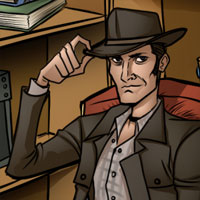 About the Author:
About the Author:
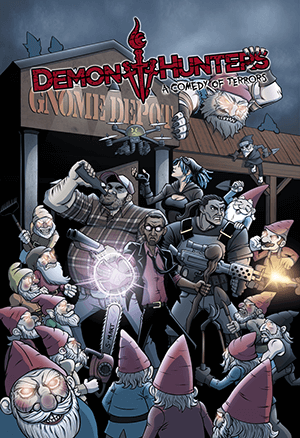




Great storytime 🙂
I would say though that not history is a bastard, but usually the people are responsible.
Well, a vampiric historian is almost as clever as a timetravler, seeing that he also had the opportunity to life through a lot of the events he writes about. What happened to Maximilanus Transylvanus? Did he have an unfortunate run in with Silent Jim or anther Brotherhood member?
Kudos to KBC for always finding such interesting topics which also starts some research of my own off 🙂